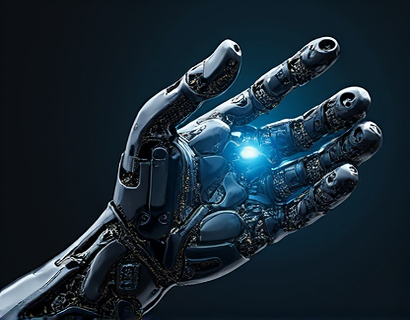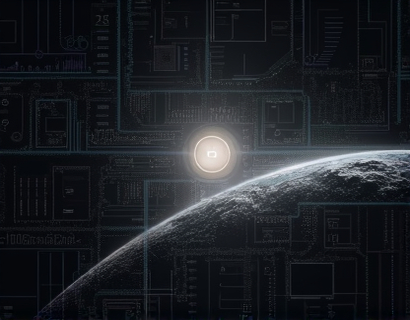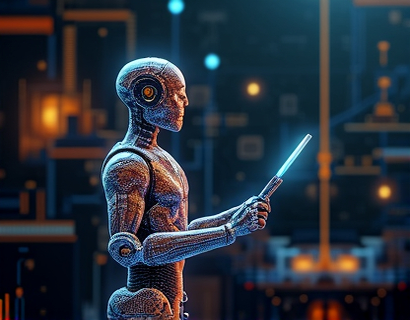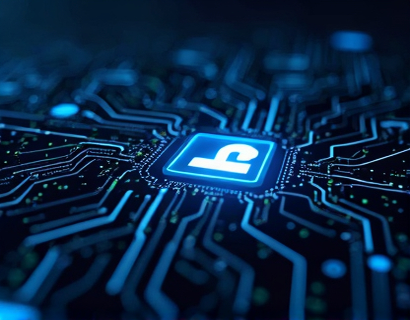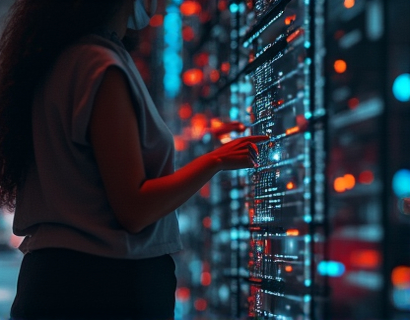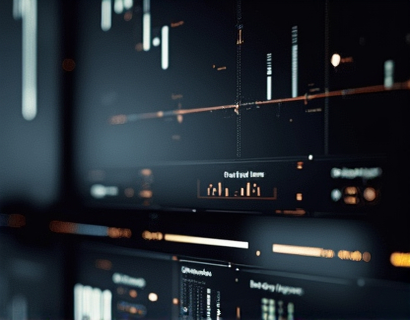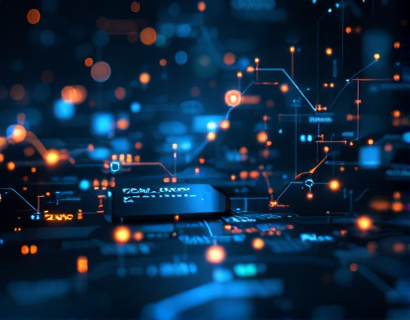Accelerating Digital Transformation: The Synergy of Crypto and AI
The digital landscape is undergoing a profound transformation, driven by the convergence of blockchain technology and artificial intelligence. This synergy is not just a trend but a fundamental shift in how we interact with digital services and applications. For tech innovators and early adopters, understanding the potential of this convergence is crucial for staying ahead in a rapidly evolving market. This article delves into the transformative power of combining blockchain and AI to revolutionize app and service interactions, driving unprecedented growth and engagement.
The integration of blockchain and AI creates a robust ecosystem that enhances connectivity and elevates online presence. Blockchain provides a decentralized, secure, and transparent framework, while AI brings intelligence and automation to the table. Together, they offer a unique set of tools that can redefine digital experiences. This article serves as a comprehensive guide for those looking to harness these technologies to enhance their digital strategies and achieve significant advancements.
Understanding Blockchain and AI
To fully appreciate the potential of blockchain and AI, it's essential to understand each technology individually. Blockchain is a distributed ledger technology that ensures data integrity and security through cryptographic hashing and consensus mechanisms. It enables trustless transactions without the need for intermediaries, making it ideal for applications requiring transparency and immutability.
Artificial intelligence, on the other hand, involves the simulation of human intelligence processes by machines, particularly computer systems. These processes include learning, reasoning, and self-correction. AI can analyze vast amounts of data, identify patterns, and make predictions or decisions with minimal human intervention. When combined, blockchain and AI can create systems that are not only secure and transparent but also intelligent and adaptive.
Enhancing Security and Trust
One of the most significant benefits of integrating blockchain and AI is the enhancement of security and trust in digital transactions. Blockchain's inherent properties, such as immutability and transparency, ensure that once data is recorded, it cannot be altered without detection. AI can further bolster security by detecting and mitigating anomalies and potential threats in real-time.
For instance, AI algorithms can monitor blockchain networks for unusual activity patterns that may indicate a security breach. By analyzing transaction data and network behavior, AI can predict and prevent fraudulent activities, ensuring a higher level of security for users. This combination is particularly valuable in industries like finance, where trust and security are paramount.
Improving Efficiency and Automation
AI's ability to automate complex tasks and processes, when paired with blockchain's smart contract capabilities, can significantly improve efficiency in various industries. Smart contracts are self-executing contracts with the terms of the agreement directly written into code. They automatically trigger actions when predefined conditions are met, reducing the need for manual intervention.
For example, in supply chain management, blockchain can provide a transparent and tamper-proof record of transactions, while AI can optimize logistics and inventory management. AI algorithms can predict demand, optimize routes, and automate order fulfillment, all while the blockchain ensures that every step is recorded and verifiable. This synergy not only streamlines operations but also reduces costs and errors.
Personalization and User Engagement
In the realm of digital services, personalization is key to driving user engagement and satisfaction. AI-driven analytics can process vast amounts of user data to create detailed profiles, enabling highly personalized experiences. When combined with blockchain, these experiences can be secured and owned by the users themselves.
Blockchain-based identity management systems can give users control over their personal data, allowing them to share specific information with services while maintaining privacy. AI can then use this data to tailor content, recommendations, and interactions, creating a more engaging and relevant user experience. This approach not only enhances user satisfaction but also builds trust and loyalty.
Decentralized Applications and Services
The convergence of blockchain and AI is also revolutionizing the development of decentralized applications (dApps) and services. dApps leverage blockchain's decentralized nature to create applications that are resistant to censorship and control by any single entity. AI can enhance these applications by providing intelligent functionalities and adaptive behaviors.
For instance, AI-powered chatbots on blockchain-based platforms can offer 24/7 customer support, handling queries and transactions seamlessly. These chatbots can learn from user interactions, improving their responses over time. Additionally, AI can optimize the performance of dApps by analyzing usage patterns and adjusting resources dynamically, ensuring a smooth and efficient user experience.
Case Studies and Real-World Applications
Several industries are already leveraging the combined power of blockchain and AI to drive innovation and growth. In the healthcare sector, blockchain ensures secure and private storage of medical records, while AI algorithms analyze this data to provide personalized treatment plans and predict patient outcomes. This integration not only enhances patient care but also improves operational efficiency for healthcare providers.
In the financial industry, blockchain-based payment systems combined with AI-driven risk assessment tools are transforming how transactions are processed and managed. These systems can detect fraudulent activities in real-time and automate compliance checks, reducing the risk of financial crimes and improving customer trust.
In the entertainment industry, blockchain can provide transparent and fair distribution of royalties, while AI can analyze audience preferences to create personalized content recommendations. This combination ensures that creators are fairly compensated and that users receive tailored content, enhancing overall engagement.
Challenges and Considerations
While the potential of blockchain and AI is immense, there are several challenges and considerations that must be addressed. One of the primary challenges is the technical complexity involved in integrating these technologies. Developers need a deep understanding of both blockchain and AI to create effective solutions.
Another challenge is the regulatory landscape. As these technologies are still evolving, regulations are often lagging behind. Companies must navigate a complex and sometimes uncertain legal environment, ensuring compliance while innovating. Additionally, there are concerns around data privacy and the ethical use of AI, which must be carefully managed to maintain user trust.
Roadmap to Digital Success
For tech innovators and early adopters looking to harness the power of blockchain and AI, here is a roadmap to digital success:
- Educate and Build Expertise: Invest in training and development to build a team with a strong understanding of both blockchain and AI. Stay updated with the latest advancements and best practices.
- Identify Use Cases: Conduct a thorough analysis of your business processes to identify areas where blockchain and AI can add value. Focus on use cases that can drive significant improvements in security, efficiency, and user engagement.
- Prototype and Test: Start with small-scale prototypes to test the integration of blockchain and AI. Gather feedback and iterate on the solutions to ensure they meet the desired outcomes.
- Build a Robust Ecosystem: Develop a comprehensive ecosystem that leverages the strengths of both technologies. This may involve creating decentralized applications, secure data management systems, and intelligent user interfaces.
- Ensure Compliance and Ethics: Stay ahead of regulatory requirements and adhere to ethical standards. Implement transparent practices and obtain necessary certifications to build trust with users and stakeholders.
- Monitor and Optimize: Continuously monitor the performance of your blockchain and AI solutions. Use data analytics to identify areas for improvement and optimize the systems for better results.
By following this roadmap, organizations can effectively integrate blockchain and AI, unlocking new possibilities and driving unprecedented growth and engagement in the digital landscape.
Conclusion
The convergence of blockchain and AI represents a transformative force in the digital world. By combining the security, transparency, and decentralization of blockchain with the intelligence and automation of AI, organizations can create innovative solutions that enhance connectivity and elevate online presence. For tech innovators and early adopters, embracing this synergy is not just an option but a necessity for staying competitive and relevant in the rapidly evolving tech landscape. This comprehensive guide has provided insights and a roadmap to help navigate this exciting journey, paving the way for digital success.




